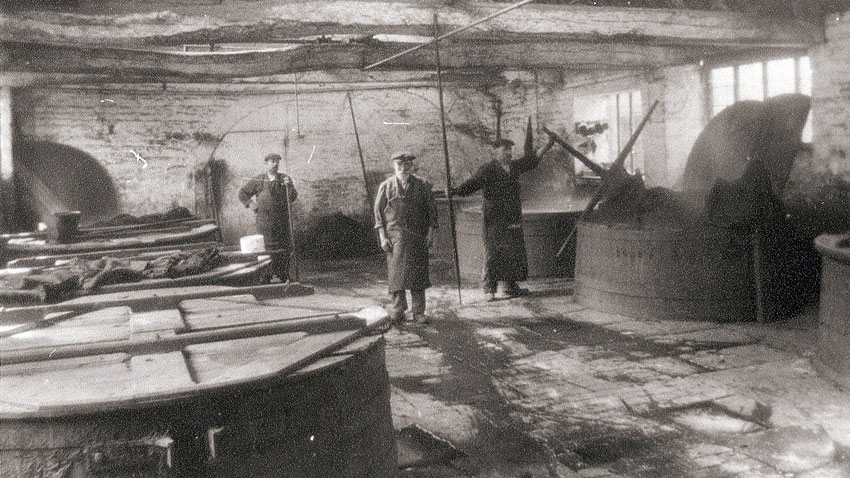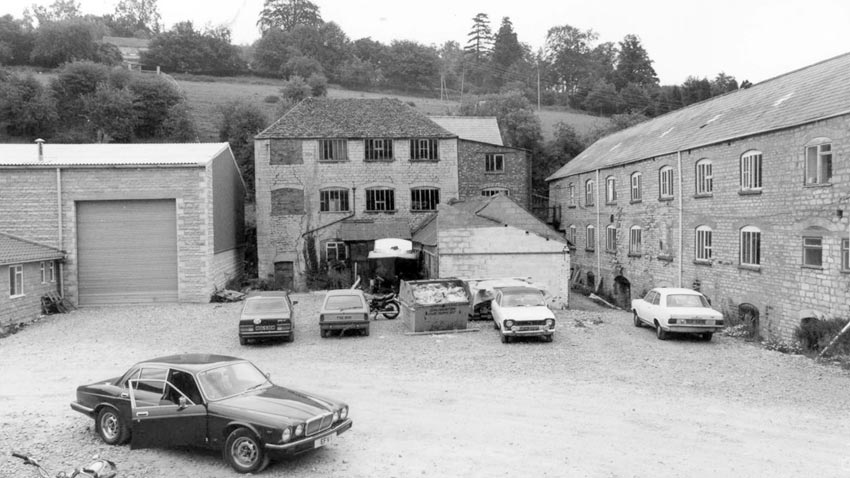
Spring Mill History
The Spring Mill site dates back to at least the 16th century when a fulling and corn mill belonging to the Webb family occupied the site. The mill was used for cloth manufacture in 1814 when it was occupied by Clutterbuck, Davis & Brown and continued to be used as a woollen mill until 1879 when Porter & Co converted it into a flock mill.
Holcombe Mill
On the Avening stream, the highest mill in Nailsworth parish was Holcombe Mill, which was presumably a cloth mill by 1728 when William Webb, clothier of Holcombe, was recorded. Samuel Clutterbuck of Holcombe, clothier, died in 1766, and in 1798 the brothers Edmund and James Clutterbuck were making cloth there. The mill was owned and occupied by Edmund in 1804 when it included 3 stocks, a gig-mill and a dye-house. In 1820, Joseph, Richard, and William Brown were making cloth there. Ownership passed to James Clutterbuck in 1839 and, after his death the following year, his trustees leased it to Edward and William Barnard of Nailsworth.
Roberts, Jowlings, & Co. occupied it in 1855 when the main mill was powered by 3 water wheels and there was also a newly erected building called Spring Mill on the site. Holcombe Mill later belonged to John Wise and in 1870 it was worked by the firm of Wise, Stevens, and Whitby. By 1879 it had been adapted to flock, shoddy and hearth-rug productions by Porter & Co., later Mallett, Porter, & Dowd, who were succeeded early in the 20th century by the Purified Flock and Bedding Co.; the latter continued at the site until 1939 or later. Afterwards it was occupied by the Holspring Bedding Co., but the 19th century buildings were derelict by 1973.

Spring Mill emerges
The current owners moved their engineering business to Spring Mill in the 1970s, and started the process of creating the Business Park we have today. Over the years, new commercial buildings have been erected and period buildings brought back into use, culminating in the restoration of Holcombe Mill, a Grade 2 listed structure. The mill was rescued from near dereliction and, in the process of restoration, has been converted into a modern, flexible office space for one or more occupiers.